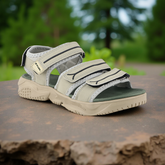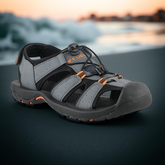Can smoking cause foot problems?
As a smoker, you're more likely to suffer from foot problems. If you have diabetes or heart disease, the risk is even greater. No matter how addicted you are to smoking, it is important to understand how it impacts our feet and what risks are involved.
PAD
Smoking damages the blood vessels in your body. It includes those in your legs and feet - meaning smokers are at increased risk of developing peripheral artery disease (PAD). PAD means less blood flow to your extremities, leading to numbness, pain, infection below your knees or elbows, and ulcers on toes or fingertips due to reduced sensation in these regions. Without adequate circulation, wounds heal poorly, so they may become infected too – leading eventually to amputation.
Diabetic neuropathy in both feet
Smoking has been linked with diabetic neuropathy in both feet, which causes numbness and tingling sensations - and an increased risk of peripheral vascular disease (PVD) in the legs or feet reduces blood flow to the extremities. Smoking also contributes to other conditions like bunions, hammertoes, and plantar fasciitis by reducing blood flow through these areas.
Nicotine disrupts proper blood flow in the feet.
The nicotine in cigarettes interferes with the nutrient supply of your bones, nerve tissue, and joints. It's this nicotine that keeps your feet from getting the proper amount of blood flow.
Nerve damage and pain in feet
Smoking also makes nerves more susceptible to damage, which is why you may experience feet pain due to nerve damage. Smoking can cause many symptoms like burning and pressure in the toes and feet and numbness or tingling in the soles of the feet.
Tips for dealing with tobacco-related feet issues
It is not easy to quit a habit like smoking, but you can greatly reduce your chances of developing foot-related problems once you do. If you are trying to stop but keep going back to old habits, it may be helpful to consult with your doctor about medications that may help you stay away from smoking. Some of the general guidelines one can follow;
- Taking aspirin or a similar antiplatelet agent is recommended at the first sign of symptoms (reduced circulation in your feet). It can help to reduce your risk of developing foot ulcers.
- Early diagnosis is critical for treating foot problems with PAD because the longer the condition goes undetected, the higher the risk of ulcers and amputation. Treatment for PAD includes either artery-opening procedures (invasive surgery) or medications to improve blood flow, avoid amputation when possible, and prevent further complications.
So how can you tell if your feet are at risk?
You should have screening for PAD if:
- You smoke or are exposed to secondhand smoke.
- You have diabetes, high blood pressure, and cardiovascular disease, including coronary artery disease, peripheral vascular disease, and heart failure.
Conclusion
Quit smoking now. If you can't quit, talk to your doctor about using medications that may make it easier to give up cigarettes for good. Exercise regularly, even if it's just a short walk three times per week. It helps improve circulation and protect against other diseases like diabetes and heart disease. Also, opt for good-quality shoes that can keep your feet relaxed and protect them from any illness or complications.







2 comments
Great article explains things very well.
I love that it explains foot problems, their causes, and preventions. It helps us to understand how foot problem occurs. For more information about Foot corn, you can visit our site.
-
https://calgarypodiatry.ca/